Anatomy Chapter 13
1/48
Earn XP
Description and Tags
the nervous system
Name | Mastery | Learn | Test | Matching | Spaced |
|---|
No study sessions yet.
49 Terms
components of neurons
perikaryon, neurofilaments/neurotubules, neurofibrils, nissl bodies, axon hillocks, axoplasm, collaterals, telodendria, axon terminals, axoplasmic transport
nervous system characteristics
controls and adjusts the activity of the body
provides swift but brief responses
two anatomical divisions of the nervous system
central nervous system (CNS) and peripheral nervous system (PNS)
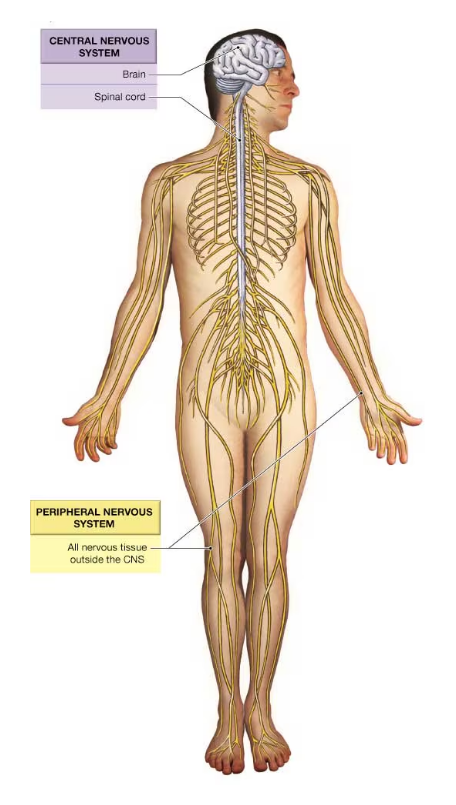
the nervous system consists of _____________________
all the nervous tissue in the body
components of the CNS
the brain and spinal cord
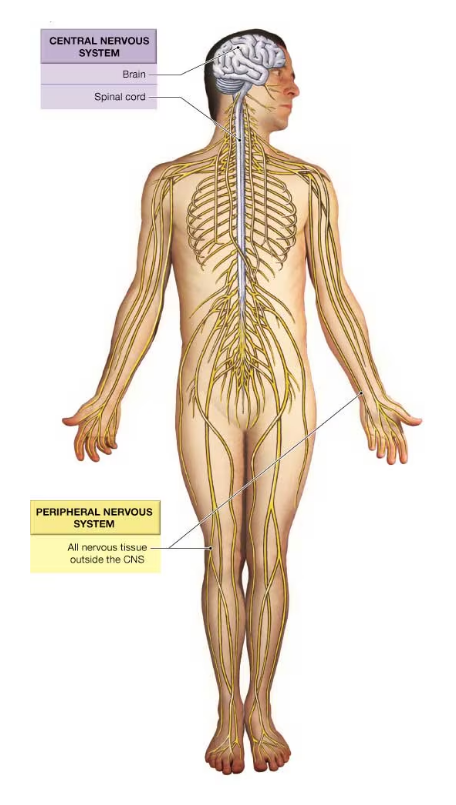
central nervous system (CNS) functions
1) integrating, processing, and coordinating sensory input and motor output
2) acting as the seat of intelligence, memory, learning, and emotion

CNS receives information from the _______ division and commands with the _______ division
afferent, efferent
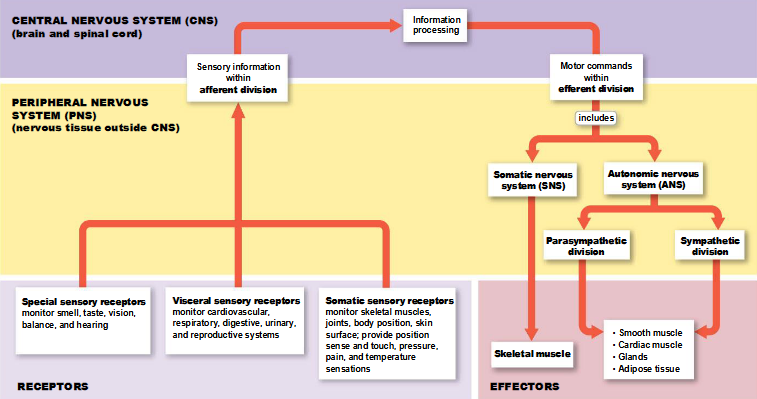
cerebrospinal fluid (CSF)
clear, watery fluid that fills the central canal and ventricles, surrounding the CNS
components of the peripheral nervous system (PNS)
all of the peripheral nerves and nervous tissue outside the CNS
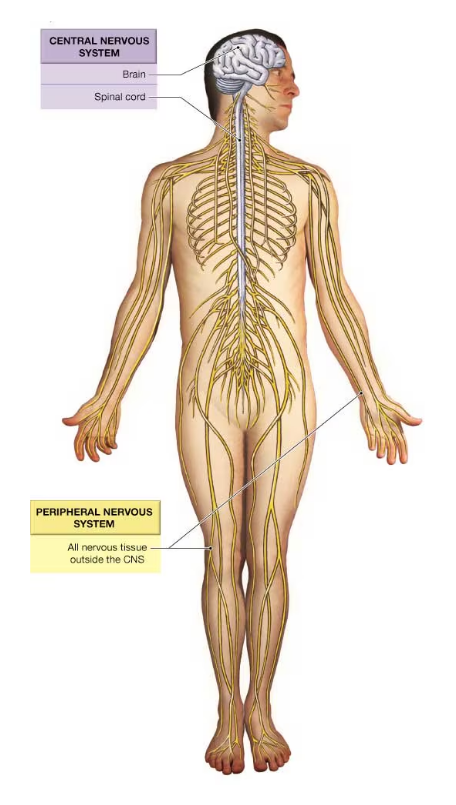
PNS function
provides sensory information to the CNS and carries motor commands away from the CNS

divisions of the PNS
afferent division and efferent division
afferent division of the PNS
carries sensory information to the CNS; begins at receptors that monitor specific characteristics of the environment
the __________ of a receptor carries information to the CNS
stimulation

receptor examples
sensory process, specialized cells or clusters of cells, or complex sense organs
example of a complex sense organ that acts as a receptor
the eye
efferent division of the PNS
carries motor commands from the CNS to muscles and glands; begins inside the CNS and ends at the effector
effector
a peripheral gland or muscle cell innervated by a motor neuron
examples of effectors
muscle cells, gland cells, other cells specialized to perform specific functions
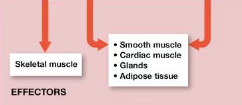
subdivisions of the afferent division of the PNS
somatic and visceral sensory receptors
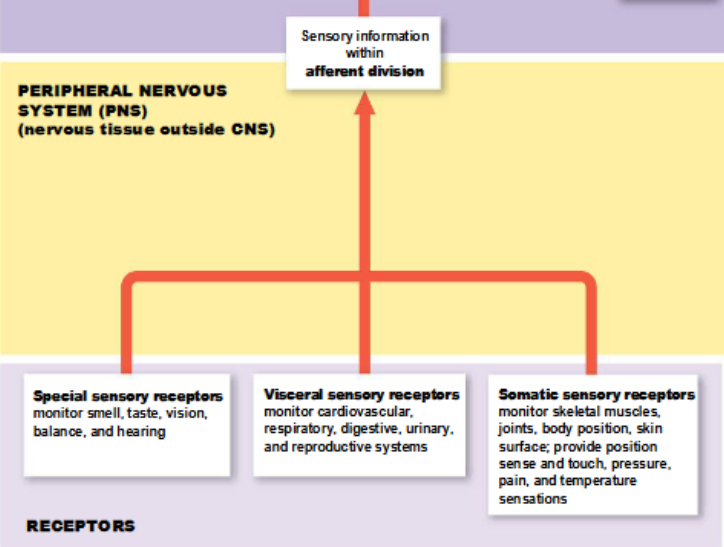
somatic sensory receptors of the afferent division
monitor skeletal muscles, joints, skin, and from the visceral sensory receptors
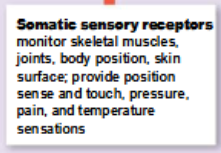
visceral sensory receptors of the afferent division
monitor other internal structures, such as smooth muscle, cardiac muscle, glands, and respiratory and digestive organs
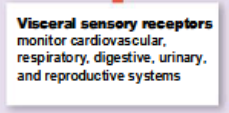
special sensory receptors of the afferent division
monitor smell, taste, vision, balance, and hearing
subdivisions of the efferent division of the PNS
somatic and autonomic nervous systems
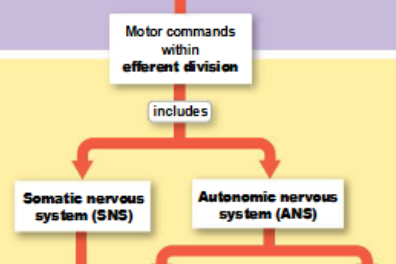
somatic nervous system (SNS)
controls skeletal muscle contraction
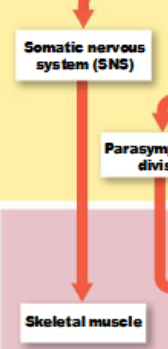
autonomic nervous system (ANS)
regulates smooth muscle, cardiac muscle, and glandular activity
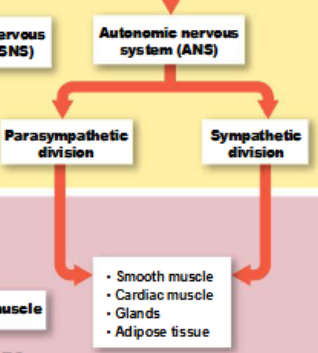
divisions of the ANS
parasympathetic and sympathetic divisions
activities of the somatic nervous system may be under ____________________ control
voluntary or involuntary
example of voluntary control of the SNS
voluntary contractions of the skeletal muscles
example of involuntary control of the SNS
immediately withdrawing your hand from a hot stove even before noticing the pain
examples of involuntary control of the ANS
heartbeat, digestive processes, and instinctive responses to threatening situations
concept check 13.1: what are the two subdivisions of the nervous system?
the central and peripheral nervous systems
two types of cells contained in the nervous system
neurons and neuroglia
neurons
nerve cells that are responsible for the transfer and processing of information in the nervous system
neuroglia
cells that support and protect neurons
components of neurons
cell body, axon, dendrites, perikaryon, dendritic spines, axon terminals
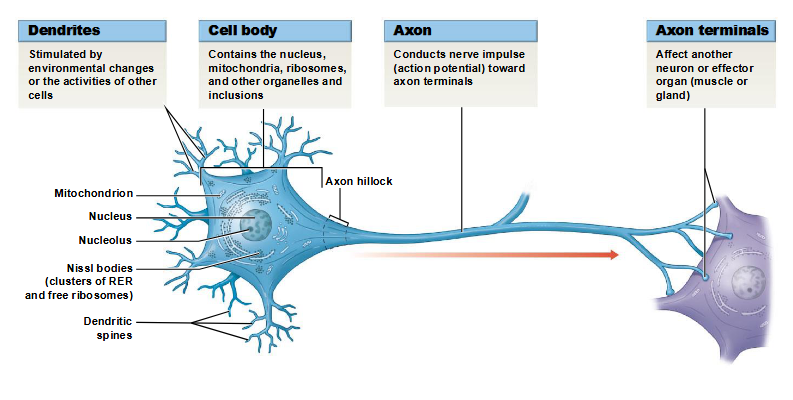
perikaryon
cytoplasm that surrounds the nucleus in the cell body of a neuron
dendrites
sensory processes of a neuron
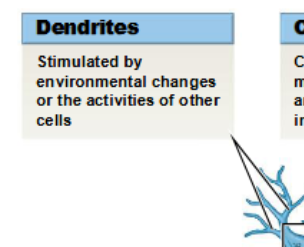
dendritic spines
fine processes of dendrites that receive information from other neurons

percent of dendritic spines making up the total surface area of the neuron
80-90%
axon
elongated extension of a neuron that conducts an action potential away from the cell body and toward the synaptic terminals
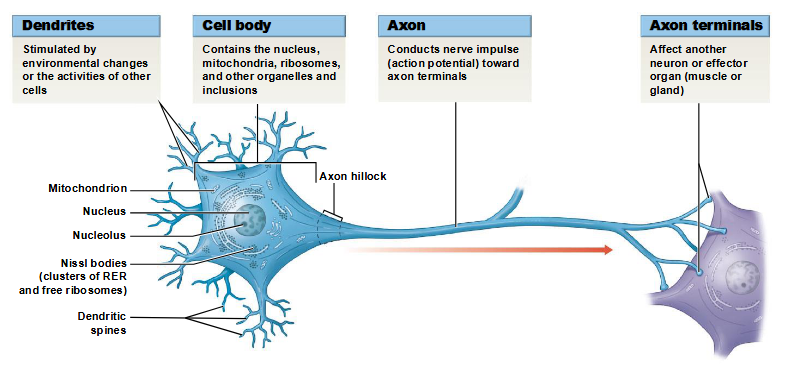
axon terminals
site of neuron communication with another cell
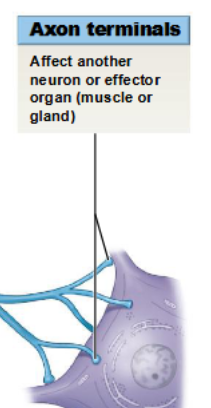
approximate ratio of neuroglia to neurons
5:1
are neuroglia smaller or larger than neurons?
smaller
can neuroglia divide?
yes, neuroglia can divide
concept check 13.2: what are the two distinct cell types found within nervous tissue?
neurons and neuroglia
four types of neuroglia in the CNS
astrocytes, oligodendrocytes, microglia, and ependymal cells
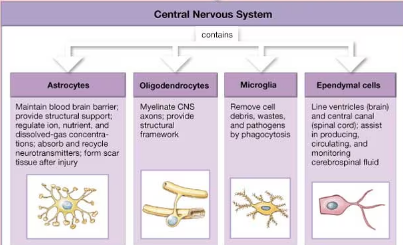
two types of neuroglia in the PNS
satellite cells and Schwann cells
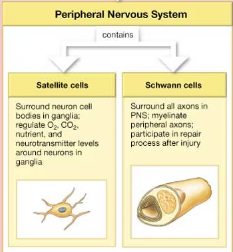
function of neuroglia in the CNS
surround CNS neurons and hold them in place, isolate neurons from each other, supply oxygen ad nutrients to neurons, destroy pathogens, and remove dead or damaged neurons
factors that distinguish neuroglia cells from each other
size, intracellular organization, the presence of specific cytoplasmic processes, and staining properties